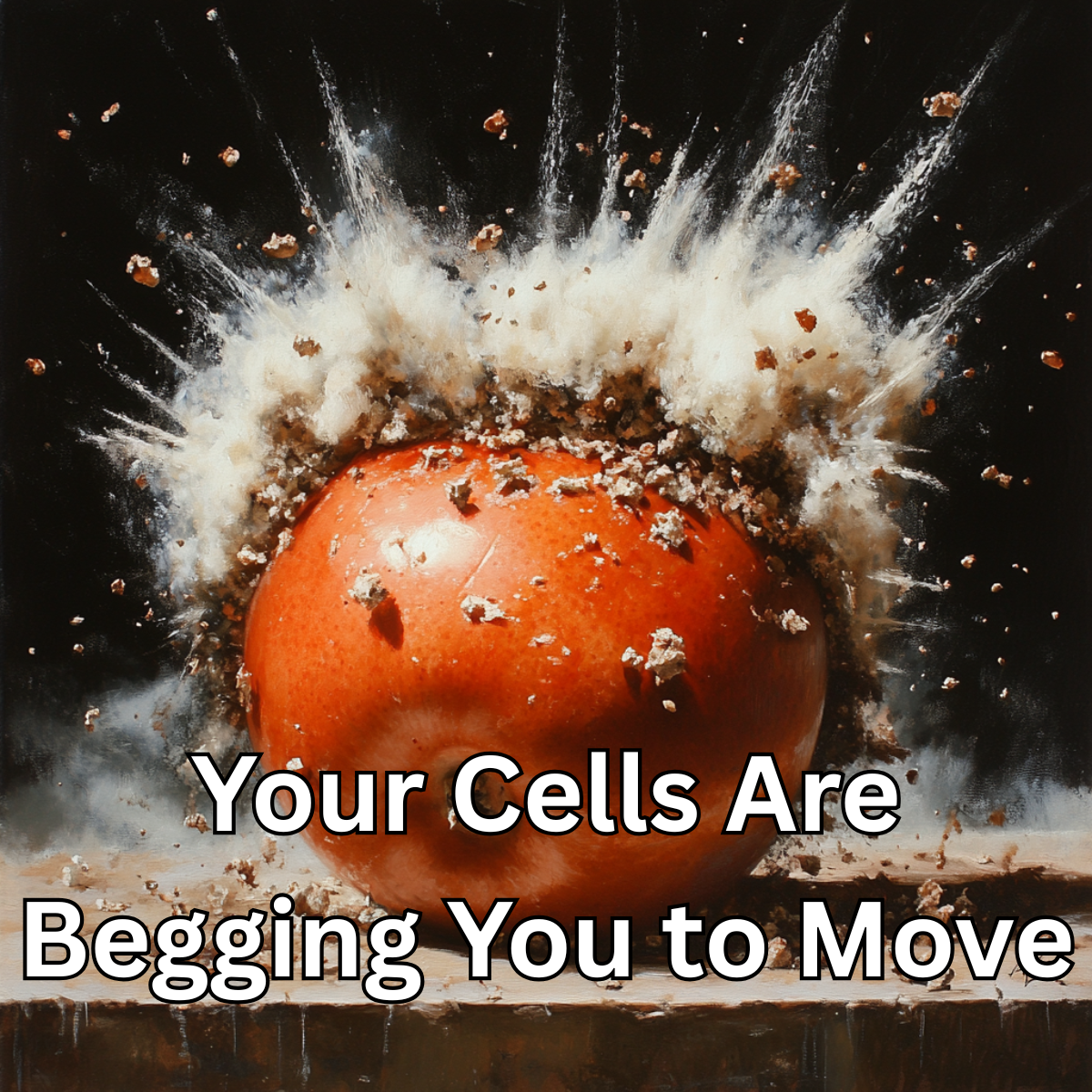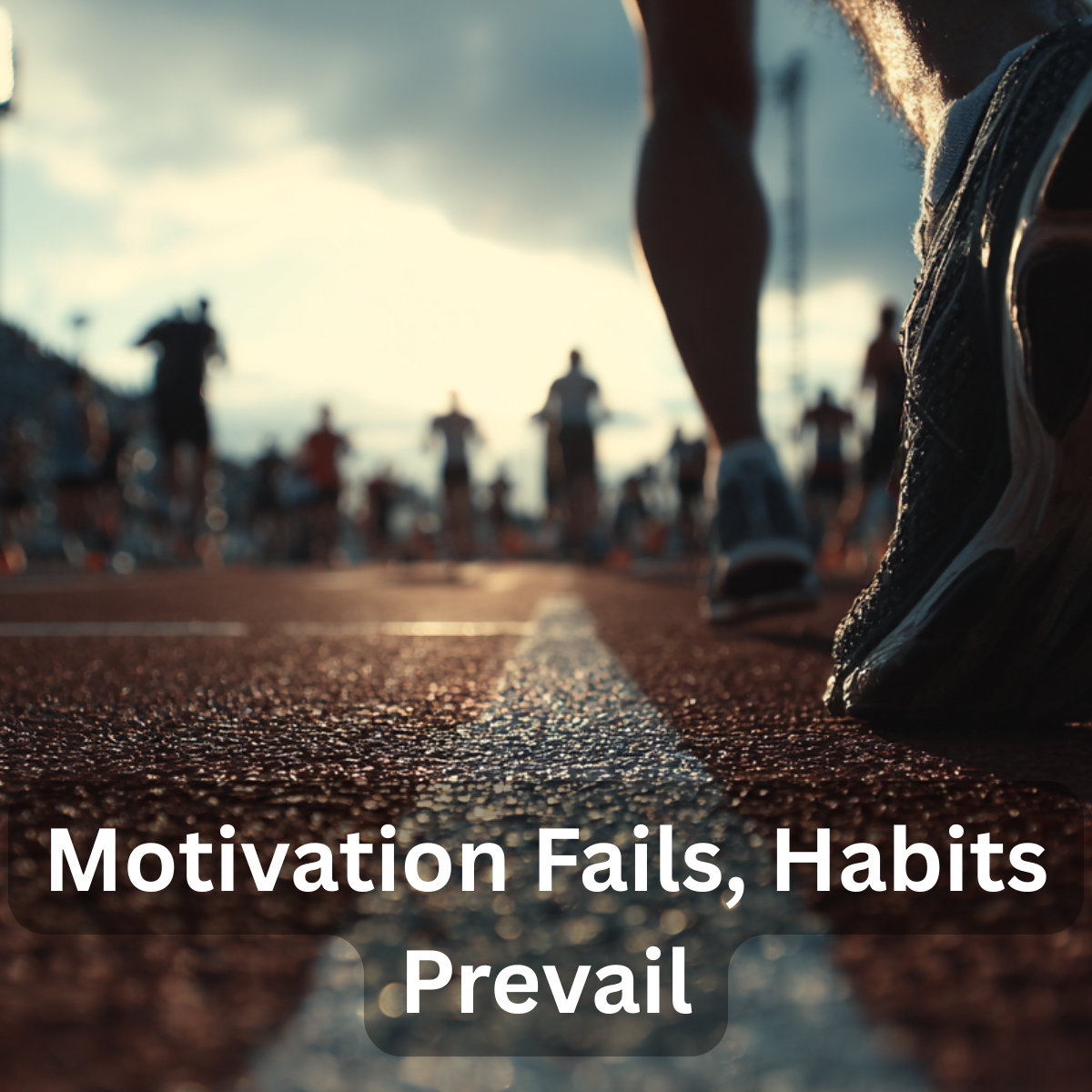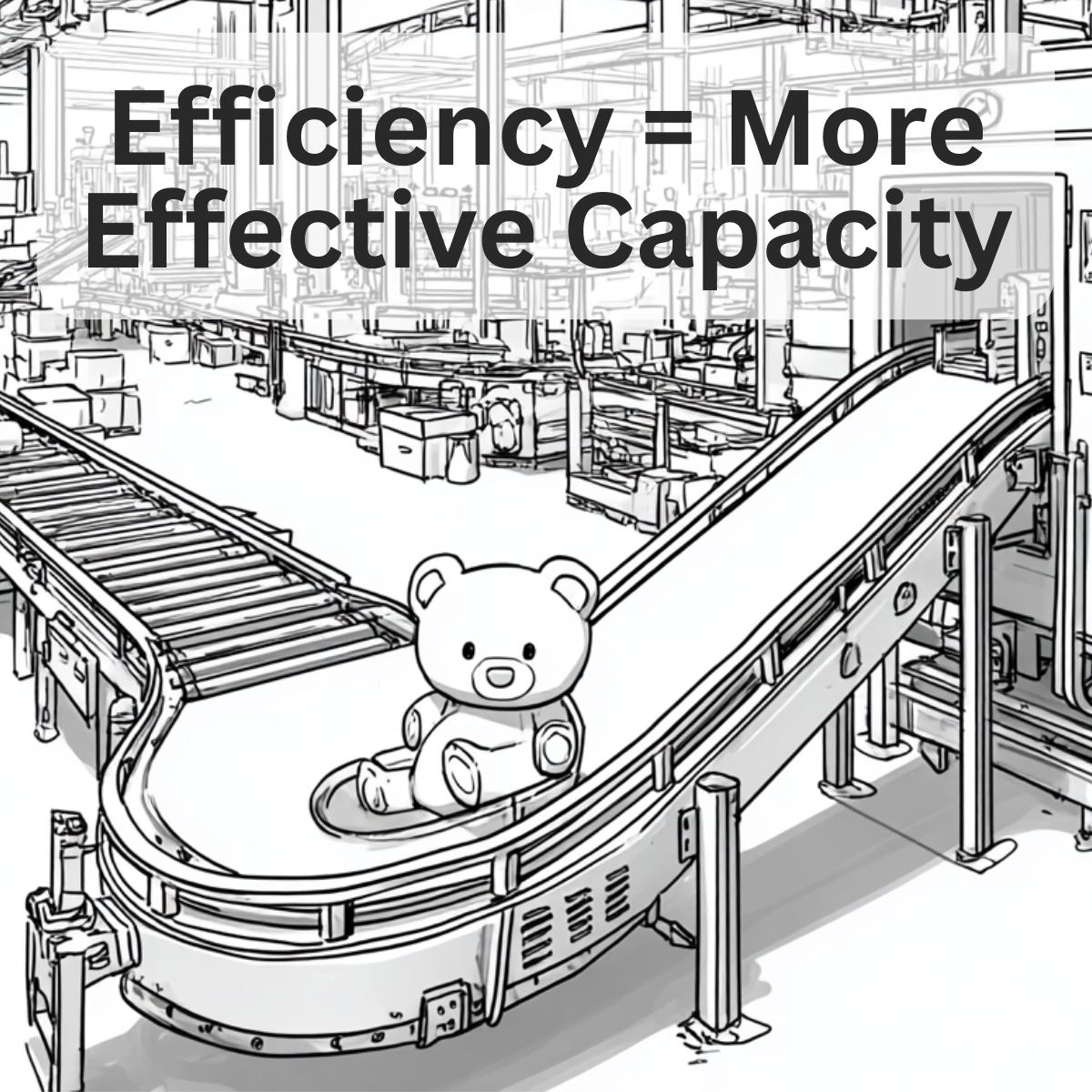Most advice about physical activity focuses on the outside: losing weight, looking better, building muscle. But if you could peek inside your body—deep down to the cellular level—you’d find a far more powerful reason to move. It’s called ATP, and your life literally depends on it.
A Morning Thought
I woke up this morning and wandered into the kitchen. I was considering what to eat, but the only options required some level of preparation. That discouraged me because I was hoping for something easy and simple. The thought of doing work to produce food felt daunting. Of course, a few moments later it wasn’t that bad at all. I managed to prepare a healthy morning meal, and it really didn’t take long. While eating, I found myself wondering—what exactly is a calorie?
I’d never really given it much thought. I had a vague sense that calories come from food and that different types of food contain different amounts. For example, fat has more calories than carbohydrates or protein.
Where Calories Come From
So I started digging into some research. As with many words today, “calorie” no longer means what it once did, and you have to go back quite a way to find its origin. The term was first introduced by Nicolas Clément in 1824, during his work on heat energy and thermodynamics. He borrowed the word from the Latin “calor,” meaning heat. Technically, we’re not really talking about “calories” but “kilocalories” (kcal for short). A kilocalorie is the amount of energy required to raise the temperature of one kilogram of water by one degree Celsius.
The method of measurement is fascinating. You take a small amount of fuel, place it in a sealed container called a bomb, and submerge it in water. You then ignite the fuel and measure the temperature increase of the water. The energy needed to raise the temperature by one degree represents one kilocalorie—or what we now simply call a calorie.
From Fire to Food
In the 1890s, Wilbur Atwater applied this method to food. He burned food to measure the heat it released and connected this to how the human body metabolizes nutrients. He developed the Atwater system, which is still in use today: 4 kcal per gram of carbohydrate, 4 kcal per gram of protein, and 9 kcal per gram of fat. So the number that haunts you when you eat a donut is actually the result of burning sugar and seeing how much heat it could generate.
This got me thinking: how does this heat measurement translate into what the body does with food? My body isn’t heating up water—or is it? Well, not exactly. But the body does use the energy from food for essential functions: muscle contractions, brain activity, repairing cells, and maintaining body temperature.
So… What’s My Body Doing With That Energy?
Food is fuel. That much is clear. But how does that translate into cellular function? Why do we use “calorie” as the unit of measurement? What exactly is happening in the body that uses this fuel?
I had a general idea—digestion breaks food into base molecules like glucose, fatty acids, and amino acids, which are then transported through the bloodstream. But that seemed too simple. I wanted to understand the deeper connection, to grasp the impact of a single calorie on my body.
Now, I failed biology in high school and avoided it in college. I only remember two things from that class: 1) an annoying girl who sat next to me and constantly popped gum bubbles, and 2) the word “mitochondria.” We had to memorize a ton of vocabulary, but that one stuck.
Turns out, mitochondria are central to this story.
Enter ATP: The Fuel of Life
The human body is astonishingly complex—more so than we can truly comprehend. Yes, the digestive process breaks food down and extracts energy sources. But what really matters is what happens next: cellular respiration. This is the process that converts glucose, fats, and proteins into ATP—adenosine triphosphate.
ATP is the molecular fuel your cells use for virtually everything.
So how does this work? ATP is made up of three components: adenine (a nitrogen base found in DNA), ribose (a five-carbon sugar), and three phosphate groups. The phosphate groups are bonded together with high-energy bonds that are unstable due to their negative charges. Imagine trying to push two magnets together with the same pole—they resist, but if you force them together and then let go, they fly apart. That’s ATP. When one phosphate group breaks off, energy is released.
Incredible, right? Every time you move your fingers, type a word, blink your eyes—ATP bonds are breaking to release energy. But ATP doesn’t just get used up and disappear. It’s recycled. When ATP loses a phosphate, it becomes ADP (adenosine diphosphate). The mitochondria then reattach another phosphate group to turn ADP back into ATP.
ATP Is Renewable — Sort Of
Your body is an ATP recycling machine. You process somewhere between 80 and 100 pounds of ATP per day—yet only store about 50 grams at any given moment. That means each molecule is reused hundreds of thousands of times per day.
Still wondering why you need food? Because turning ADP back into ATP takes energy. Food is the charger that powers this cycle. Without it, your cells can’t recharge, and the system shuts down.
So how much ATP is created from a single carbohydrate (about 4 calories)? On average, one molecule of glucose can produce 36 to 38 molecules of ATP. When you eat a 30g carbohydrate donut, you’re introducing about 100 sextillion glucose molecules into your system. These are converted into roughly 3.6 septillion molecules of ATP. Impressive? Sure. But put it in perspective: your body has around 37 trillion cells. Each one uses up to 2 billion ATP molecules every second.
Yes, every second.
The Power of Movement
Which brings me back to the point. Physical activity accelerates this process. At rest, your brain and muscles use the most ATP. Your brain, though only 2% of your body weight, consumes up to 25% of your daily ATP. Neurons fire constantly, and since they don’t store ATP, they draw from your bloodstream without rest. So yes—writing this blog was exhausting. My brain used a tremendous amount of energy to do it.
When you move, your skeletal muscles go into overdrive. Sprinting down the street? You’re increasing ATP consumption in your muscles by over 100 times. Movement demands fuel. More movement means more ATP, and over time, your body adapts.
An active person becomes more efficient. They generate more ATP per glucose molecule, increase mitochondrial density in their cells, and improve fat conversion for fuel. Their bodies clear lactic acid faster and resist fatigue longer.
Compare that to a sedentary lifestyle. Less movement means more reliance on inefficient anaerobic metabolism, faster fatigue, and lower mitochondrial density. The body struggles to maintain ATP production under strain. It’s not just about fitness—it’s about function.
And here’s the most overlooked part: oxygen. Cellular respiration’s full energy yield requires oxygen. Without it, you only get 2 ATP per glucose molecule. With it? You get up to 38. The waste products of this oxygen-powered process? Carbon dioxide and water—what you breathe out and eliminate.
Ever wonder where fat goes when you lose weight? You exhale most of it. The fat is converted into energy, carbon dioxide, and water. You breathe your weight loss into the air.
So why is it so hard to lose weight? One major reason is your body’s ATP demands. Your brain and muscles consume the most. If you want to burn more, you need to move more. And the more you move, the more efficient your cells become at producing and using ATP.
Physical activity isn’t just about burning calories. It’s about recharging the engine of life—making your cells stronger, your energy more sustainable, and your brain more capable. So the next time you feel tired, sluggish, or stuck, remember: your body isn’t asking for rest—it’s asking for movement. Even a little motion can light up your entire cellular world.
Move more—because your cells are begging for it.




